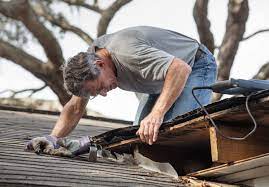There are several ways to get a loan to cover emergency home repairs, including getting a line of credit. The government may also be able to help you out. Regardless of how you get the money, it is important to have an emergency home repair fund on hand. Having a line of credit is a great option if you need money fast, but it can also be a big hassle. Here are some tips to help you get started.
Getting a loan for emergency home repairs
Getting a loan for emergency home repairs may be necessary when you need to make costly repairs. Using credit cards or charging emergency repair costs to your credit card is not the most beneficial option in the long run. Not only will you end up paying more in interest, but you will also risk damaging your credit rating. So, how can you get a loan for emergency home repairs? Read on for some helpful advice.
Emergency home repairs come in many forms. Some are simple, do-it-yourself projects, while others require professional assistance. Whatever the case may be, a personal loan for emergency home repairs can help you make much-needed repairs without stressing about your finances. It is important to shop around for the right product to suit your needs. If you can pay back the loan in a few months, you can avoid paying interest for an extended period of time.
Another option is a home equity line of credit (HELOC), which provides access to up to 85 percent of the current value of your home. A HELOC allows you to draw down the money as needed. You can use this line of credit for emergency home repairs because it has a lower interest rate and may even be tax-deductible. The only downside to HELOCs is that the interest rate can change over time, but you can still use it immediately if you need it.
Using a line of credit
Homeowners often face unforeseen expenses, such as expensive repairs or unexpected car repair bills. If you have saved money in an emergency account or a home equity line of credit, you can easily access the funds when you need them. Home equity lines of credit typically carry a lower interest rate than a credit card and the interest is usually tax-deductible. Home equity lines of credit may also be available for a limited period of time.
While you may not need all of the available credit, a line of credit can provide the funds you need to make emergency home repairs. You don’t have to use the full amount of the credit line, so a HELOC is a good option if you’re unsure of the cost of the emergency repairs. Just remember that a HELOC can only be used for emergencies, and you’ll need to meet certain qualifications to qualify.
Taking out a personal loan to cover an emergency repair can be expensive. But there are a variety of personal loans specifically designed for this purpose. Many lenders will give you up to $1,000 to cover the repair expenses. Payday loans are typically unsecured and carry high interest rates. Personal loans are a better option if you have good credit and can make payments on time. You can use these loans for both emergency home repairs and remodeling projects.
Getting government assistance
Getting government assistance for home repair is often possible for homeowners. Home repair grants and loans can provide funding for many repairs, but the qualifications vary widely. Those who are elderly or disabled may be eligible for the grants, as long as they meet certain requirements. Repairs must also improve the livability of the home, and the intended repairs must be necessary for safety. Home repair grants may not be available for all repairs, but many programs offer significant help.
Free home repair grants and government loans aren’t the only sources of funding. Many nonprofit organizations also offer home repair assistance. For example, the U.S. Department of Agriculture’s Rural Development program offers grants to help homeowners fix up their homes. Single-family home repair loans and grants make home improvements affordable, even for older people. They can also be obtained through your local Area Agency on Aging or community development organizations.
Many states and local governments offer programs to help homeowners with repairs. Often, these programs are administered by agencies and financial institutions, and are available to low-income families, senior citizens, and disabled people. However, these programs are limited in scope and may not be available in your area. You should check with your local housing agency for eligibility requirements. For example, some programs only apply to low-income families, so if you are a senior citizen or disabled, you may qualify for free home repair.





